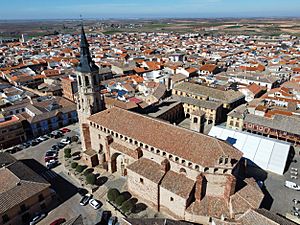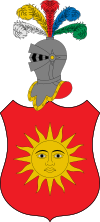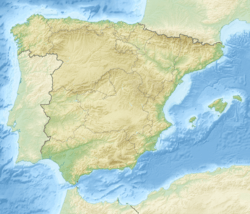La Solana facts for kids
Quick facts for kids
La Solana
|
|||
|---|---|---|---|
 |
|||
|
|||
| Country | Spain | ||
| Autonomous Community | Castilla–La Mancha | ||
| Province | Ciudad Real | ||
| Area | |||
| • Total | 134.18 km2 (51.81 sq mi) | ||
| Elevation
(AMSL)
|
745 m (2,444 ft) | ||
| Population
(2018)
|
|||
| • Total | 15,523 | ||
| • Density | 115.688/km2 (299.630/sq mi) | ||
| Time zone | UTC+1 (CET) | ||
| • Summer (DST) | UTC+2 (CEST (GMT +2)) | ||
| Postal code |
13240
|
||
| Area code(s) | +34 (Spain) + 926 (Ciudad Real) | ||
| Website | www.lasolana.es | ||
La Solana is a town in Ciudad Real, a province in the region of Castilla–La Mancha, Spain. It has about 15,340 people living there. The weather in La Solana is very dry. This area of Spain is well-known for making lots of wine and olive oil.
Contents
History of La Solana
How La Solana Began
La Solana, like many other towns in the La Mancha region, was settled a long time ago. This happened in the 1200s when three special groups, called Military Orders (Santiago, Calatrava, and San Juan), helped people move into this area. These orders were like religious and military groups that owned the land.
La Solana wasn't an old town that was "won" from the Moors (Muslims) in battles. It was a newer settlement. People believe that the town started around the year 1283. Old writings from 1575 mention a tower that was used as a fort. This tower helped protect the people from possible attacks. It was probably built by the Order of Santiago. Today, the tower of the Santa Catalina Church stands where this old fort tower might have been.
Early Settlers and Growth
Writings from 1788 tell us that the first people to live in La Solana were shepherds from a place called Soria. They would come with their sheep during certain seasons. They liked the fertile land nearby, especially in areas called La Moheda and La Veguilla. So, they decided to build their homes here and became the first permanent residents.
In 1463, La Solana was given the important title of "town." By 1468, about 200 families lived there. By 1575, this number grew to 750 families! The town was famous for its wine, especially red wine, which was sold to nearby areas. A neighboring town, Membrilla, had more people but produced less wine than La Solana. Some people even think that the good wine mentioned by the famous writer Miguel de Cervantes might have come from La Solana.
Changes in Power
La Solana, like the whole Campo de Montiel area, belonged to the Orden de Santiago. However, things changed a lot when the Reyes Católicos (Catholic Monarchs) ruled Spain. The kings took more control over the Order. They became "administrators" of the Order, meaning they managed its lands and money. This reduced the power of the Order's leaders.
The kings also made the way the land was governed more like other royal towns. They appointed governors and mayors to manage the towns and make sure justice was served. Villanueva de los Infantes, about 25 kilometers (15.5 miles) from La Solana, became the main center for government. This was because it was closer to the more active towns like La Solana and Membrilla.
Where the Name Comes From
The name "La Solana" comes from an old well called "La Fuente de la Solana." This well was used by shepherds and early settlers. The name "Solana" means "sunny side" in Spanish. The well was on the sunny side of a small hill where the town was built. This area is now a small garden called Rasillo Santa Ana. There's a street of steps that goes down from there and meets another street called "de la Fuente" (Street of the Fountain). The old well existed for centuries but eventually filled up with dirt. No one knows exactly where it was, but an old house nearby has a cave with a spring inside, which might be connected to the original well.
Later History
Later, in the 1600s, two religious groups, the Barefoot Friars Trinitarios and the Barefoot Mothers Dominicas, came to La Solana and built their own convents.
In the 20th century, La Solana became known for making tools called "sickles." This time was even called the "Century of the Sickles." However, with new technology, this type of manufacturing has become less common.
The Band of Ntro. Padre Jesús Rescatado
In 1965, a special music group called the Band of Horns and Drums of Ntro. Padre Jesús Rescatado was started in La Solana. Antonio Serrano founded it because the brotherhood wanted its own band. The band first marched with 11 instruments, including five drums and six horns, wearing their brotherhood robes.
In 1966, the band got its first uniform, which was a white jacket and black pants. Over the years, they added more instruments and got new uniforms. In the early 1980s, the band was very successful and won many awards in local competitions.
See also
 In Spanish: La Solana para niños
In Spanish: La Solana para niños




